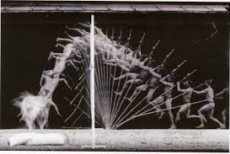
Email: emanuelealbertocirello.98@gmail.com
Total Article : 76
About Me:I am a Year 13 student which aspires to be an architect. I am interested in anything I don't yet know, and I mostly write about art, politics , Italian culture and inspirational people, although I will try to write for as many categories possible, just to test myself and get to know more things.

ost recently, photography has played an important part, as through digital editing, it traces and follows every step of the movement, and despite its flatness, it can be used to make animations and depict the subject in motion.
The will to capture the human figure in its dynamic state is illustrated by the fact that many photographers have used their skill to depict movement in a sequential way. Considering that photography has developed rapidly since its recent birth, we can see how changes in technology have helped the representation of the human figure in movement. By taking in consideration one of the earliest photographers, Edweard Muybridge, it can be seen from the picture on the left that the photographer has taken a multitude of subsequent pictures, and mounted them into their sequence so that the movement of the subject is shown from its start to its end through individual shots. This technique was thereafter used in cinema in order to depict movement, and as matter of fact many of Muybridge shots have been used to recreate short animations.

Etienne Marey, a photographer who succeeded Muybridge, integrated a multitude of shots into a singular picture. As visible from the photograph on the left, Marey’s pictures follow Muybridge’ principles of sequencing pictures, but instead he found a way to put the sequential shot into a single shot. Marey’s ability to merge multiple shots was due to his invention, the chronophotographic gun. This instrument was capable of taking a maximum of 12 consecutive frames a second, with all of the frames recorded on the same picture. This instrument has therefore allowed for a more accurate and complex representation of dynamism. Muybridge was limited to single shots that allowed for the creation of sequences, whereas Marey has been able to revolutionise photography and merge the sequential frames in one picture.
Muybridge and Marey were however contemporary, and their work is placed in the same time frame, but since the 1900’s, photography has changed and the development of new technologies has allowed for an even more intricate representation of human figure in motion.
William Wadman uses photography and digital editing for his work. His work “Dancers in Motion” exploit the camera’s blurred long exposure and slow shutter speed to capture tens of frames per second and use motion blur. His technique results in a fusion of photography and painting that vividly depicts motion. His photography can be used as a reference to analyse how throughout time this art discipline has developed the representation of the human figure with impressive image resolution that can reach 3300 x 2550 pixels.
The representation of dynamism in photography is therefore related to the technological developments of this media. Through the developments of technologies and instrumentation, it can be appreciated how more accurately the human figure can be depicted and how motion can be expressed realistically or in an abstract manner thanks to the multitude of photo editing tools available today.
Image credits: https://theredlist.com/wiki-2-16-601-798-view-pioneers-profile-marey-etienne-jules.html

0 Comment:
Be the first one to comment on this article.